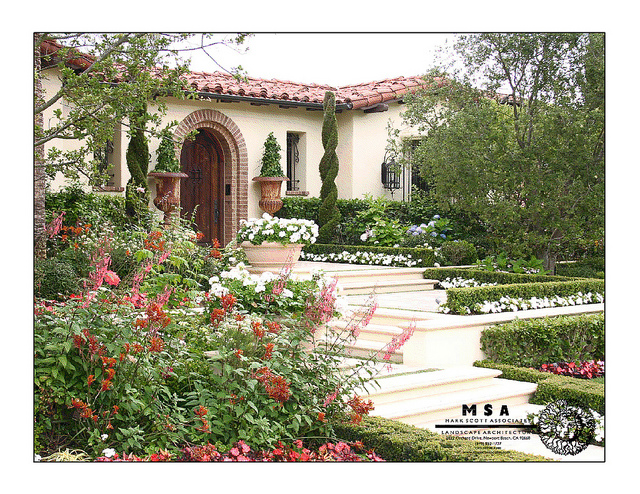Designing the Entryway
Entryways into buildings make a statement about a building’s use. It can convey a sense of care or of neglect. Think of the space between the sidewalk or driveway and the building as a sequence of spaces. Access can be direct and quick or slow and deliberate.
In general, the main entrance should be easy to locate. Paving, plants, lighting, and other objects can be used to enhance or as a guide leading toward the entryway. Designs can be formal, informal, or a combination or styles.


Water-Wise Entryway
Using water wise plants to define access to your home is a great way to showcase your entryway. A water wise entryway simply substitutes lower water use plants and more permeable paving materials to create a strong statement.
Combining a variety of plant forms and heights can accentuate the entryway but may also detract from it. For instance, tall large shrubs near the doorway may obstruct the entry and make it appear uninviting or insignificant.
Understanding mature plant size will help keep from trimming or replacing plants at a later date.
Design Considerations for Residential Entries
- What does the entryway say about who lives in the house?
- Is a more formal symmetrical design or a more relaxed informal look desired?
- Consider the architectural form of the building. Do plants used at the entryway attract or make the entryway uninviting?
- Use accent plants that attracting the viewer toward the entryway
Tips for Creating a Water-Wise Entryway
- Replace high water use plants with those requiring less water
- Reduce the amount of lawn in front entryway area by expanding planting beds
- Use appropriate mulches
- Consider more permeable paving options rather than concrete. These include pavers and flagstone
General Entryway Design Considerations and Plant Lists
West
Colorado – Front Entry Design
Colorado – Xeriscaping: Perennials and Annuals
Oregon – 10 Low-water, High-impact Perennials
Utah – Utah Water-wise Plants
Midwest
Missouri – Landscaping Your Front Yard
